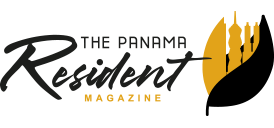By Stanley Heckadon-Moreno
This is the translated, first installment of a series originally published in the history-oriented magazine, EPOCAS, between 2000 and 2001. We hereby thank Dr. Heckadon-Moreno for allowing us to reprint such a fine story in our publication.
In 1909 the steamer, “Alliance”, owned by the Panama Railroad Company, arrived at the port of Cristobal. Onboard was the family of engineer John Edward Dierkes who, like many other Americans, came to build the greatest engineering work ever seen in the tropics: the Panama Canal. The old vessel also transported Dierkes’s wife, 30-year-old Mary LaCroix, who like him was a native of Philadelphia; their eldest daughter –10-year-old Marie– and their youngest, a thin-bodied and vivacious three-year-old by the name of Kathryn.
Dierkes helped to build the Canal’s locks. As the work progressed, the family relocated from one camp to the other. They first resided at Paraiso, Pedro Miguel, Miraflores, and Diablo on the Pacific side. They later relocated to Culebra, close to Gaillard (a.k.a. Culebra) Cut, the most mountainous and narrowest section of the Canal. Finally, in 1913, they relocated to Gatun, on the Atlantic side, as the largest of the locks neared completion. They lived there until 1917 when they returned to the United States.
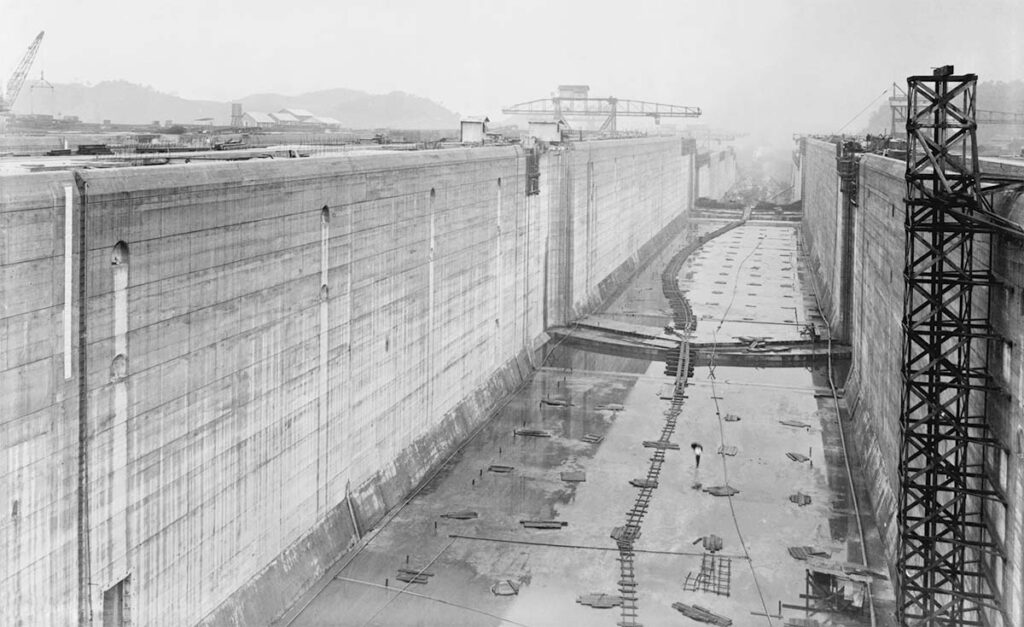
Although the story of the Panama Canal has usually been narrated by adults (more often than not, by prominent figures, such as engineers, military officers, politicians, or physicians,) today we hereby present the readers of THE PANAMA RESIDENT MAGAZINE a rather uncommon testimony on the every-day life of the families that worked on the Canal, being the witness in reference a young girl, Kathryn Dierkes. Years later, Kathryn went on to marry Roscoe Brewer and, before she died in 1982 at age 82 in Vista, California, left behind these writings of her childhood memories in Panama.
I need to explain how I gained access to these writings. In November of 1999, the Smithsonian Institute’s museums sponsored, in Washington D.C., the exhibit titled, “Make the Dirt Fly! Building the Panama Canal” which included a panel discussion on the Canal’s role in U.S. science, technology, and pop culture. I was invited to the panel to speak about the environmental status of the Canal’s watershed since I had been part of a group of Panamanian and American researchers (led by the Panama-based Smithsonian Tropical Research Institute) that had just concluded a research project in that vital region.
During the exhibit, a fellow panelist, William Worthington of the National Museum of American History –one of Smithsonian’s 16 museums—invited me to visit the engineering archives where, amongst boxes of blueprints and documents on famous engineering projects, was Kathryn’s diary, which had been donated to the museum by her son, Jack Brewer Dierkes. It was Jack who gently authorized me to have it translated and sent me the photos of the Dierkes’ in Panama in the early 20th century, which we hereby share with our readers.
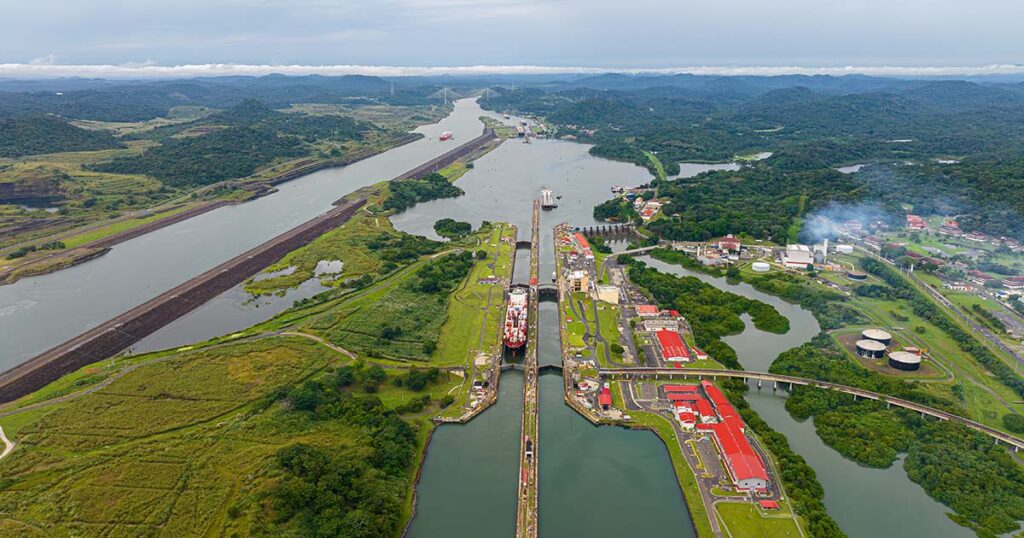
The Canal and Paraiso in 1909
Before we proceed, let’s take a glimpse at what was happening on the Isthmus the year the Dierkes arrived. In 1909, the Isthmian Canal Commission announced that, having excavated 87 million cubic yards since the beginning of the construction, the excavation project had reached its midpoint. The workforce comprised almost 33,400 workers. Being Caucasian, an engineer by trade, and an American citizen, John Dierkes was one of the waterway’s 3,000 “gold roll” employees. The rest of the workforce belonged to the “silver roll”[1].
With contained amazement, the “Canal Record” stated that, in November of 1909 alone, 40 inches of rain had fallen at Cristobal, compared to the annual average of 36 inches that fell in the United States that year.
That year, fossilized seashells were found in a bedrock of the Central Cordillera at Culebra Cut. The unexpected discovery raised the intriguing question of whether the Isthmus of Panama had been submerged under the sea in prehistoric times. The seashells were sent to the Smithsonian Institute for further research.
In 1909, the Pacific Social Club was established in Paraiso, a township that also hosted the Paraiso Women’s Club. Both organizations had been created by the wives of Canal employees. Whenever an American family like the Dierkes’ arrived at any of the Canal’s work camps, following North American cultural traditions, they would find support in organizations we now consider part of civil society. Said clubs organized cultural, educational, sports, scientific, and home-improvement activities which were vital for keeping high morale levels amongst the workforce.
Now, let’s delve into Kathryn’s memories. In 1909, distressed for not receiving any news from her husband, Mary suddenly welcomed a bundle of delayed letters from him. In them, he wrote about his departure to his new job at the Panama Canal. The family was about to set sail from New York to Cristobal, where they would join him.
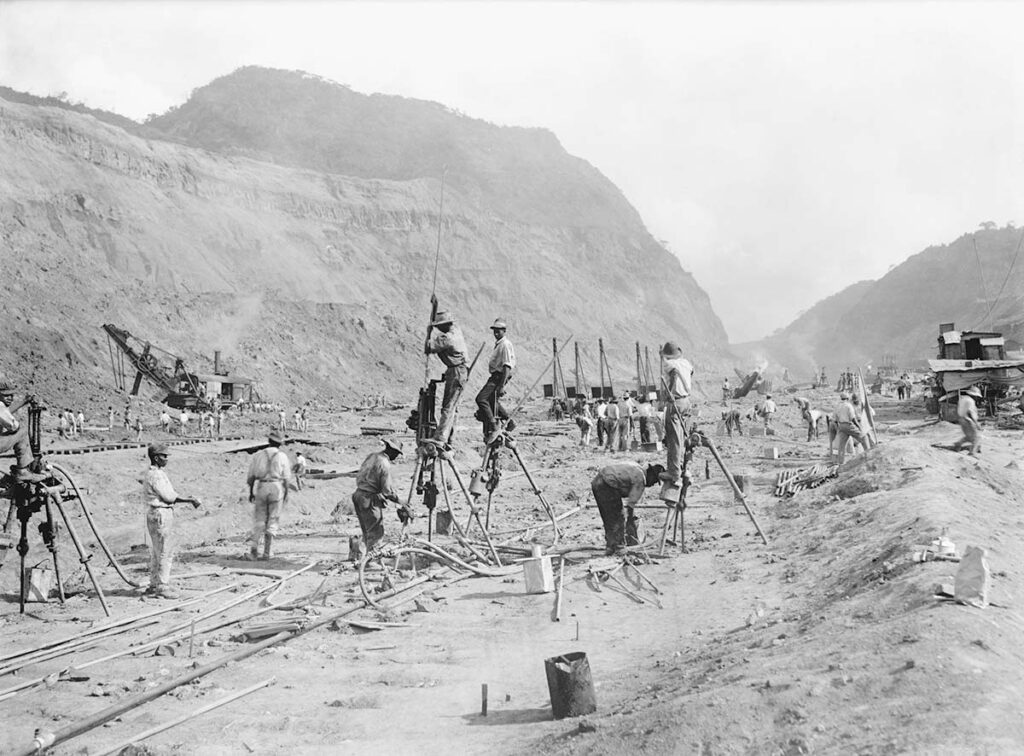
Southbound
“Being on the verge of giving up and seeking assistance, we suddenly received a bundle of letters from him. Dad had taken the opportunity to work on the Panama Canal. The pay was 25% higher than salaries in the United States and, as additional incentives, there was free housing, electricity, water, and medical and dental services. Likewise, there was transport, free of charge, for male workers and their families traveling from New York and back onboard Canal-owned vessels.
An hour after learning about this, Dad was already boarding a cargo ship bound for Panama. He didn’t even have time to write. He packed, caught a coach to the docks, and was barely able to get on board with the friends who had given him the news.
The ship called at nearly every port in Central America and Dad would mail us a letter each time he went ashore. The first of them enclosed some money for our support until we could reunite with him; however, each letter he mailed was returned to the ship since the addressee was in the United States. It so happened that, when the vessel arrived at Balboa, all of his letters had to cross the Isthmus to Cristobal and, from there, be sent to the east coast of the United States.
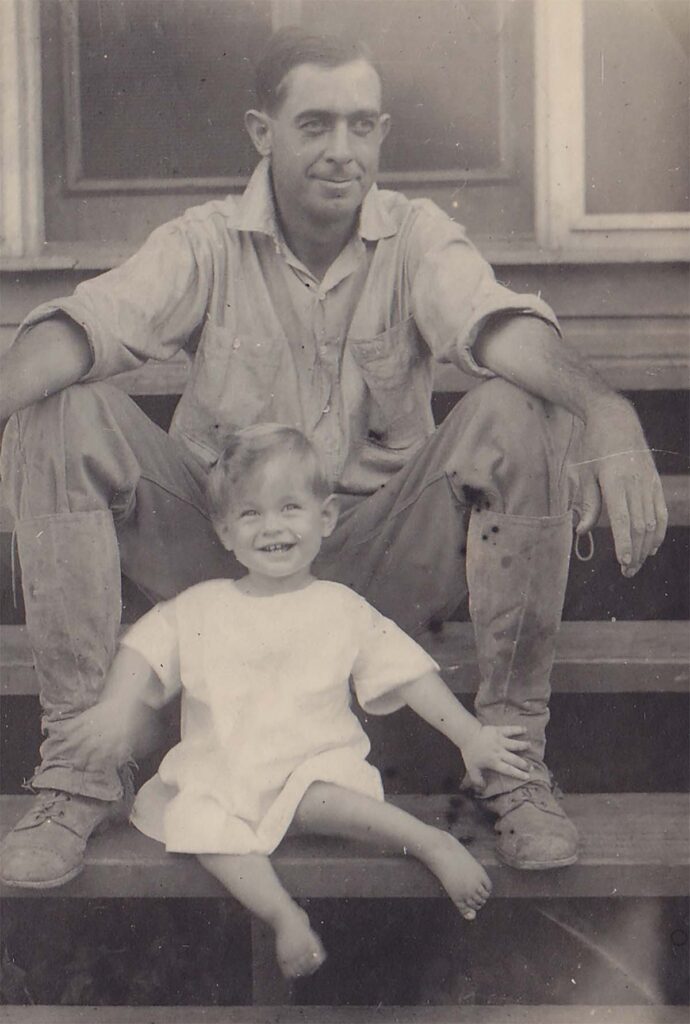
From New York to Cristóbal
Dad was hired shortly after arrival and we received a letter with our tickets to the Canal. To leave behind the way of life we had been used to prompted us to pray as a family. This time, Mom was extremely scared.
Never had she traveled aboard anything larger than a ferry and had never been farther away from the visible shoreline. The year was 1909. The month in which we departed I was three years old and Marie was about to turn 10. My grandfather accompanied us to New York where we spent a night in a hotel. I remember him getting upset with Mom for allowing me to order my breakfast. I had ordered a huge tower of pancakes and ate each one of them. By then, I was no longer a chubby baby, but a skinny little girl with the voracious appetite I’ve always had.
The Canal offered transport services with two vessels, the Advance and the Alliance, both of which had been purchased, along with the railroad, from De Lesseps’ company. It was them –the French—who started building the Canal but failed at doing so back in the late 1800s. Both ships were very old, having been built with wooden hulls, and were rather small. Years later, in the 1920s, their hulls were refurbished with metal.
I believe that Mom started to get seasick before the ship’s actual departure. She went to bed fully clothed, corset and all, and never got up until we arrived at Cristobal. I spent most of the journey seasick as well, but never did Marie fall ill, fortunately.
A hurricane struck the vessel just off the coast of Cape Hatteras, pushing us off course for two days and damaging everything on deck, including the lifeboats and the wireless system. We had no clue as to our whereabouts until the captain finally spotted land. There was no way of informing the Canal Zone we were safe onboard, which almost drove Dad insane.
He was the first person to get on board when we finally arrived. Poor Mom had to be disembarked on a stretcher. We then rode a coach drawn by a single horse to the house of Dad’s friends. Mom was able to eat something there, after which she showered and put fresh clothes on before departing to our strange, new home.
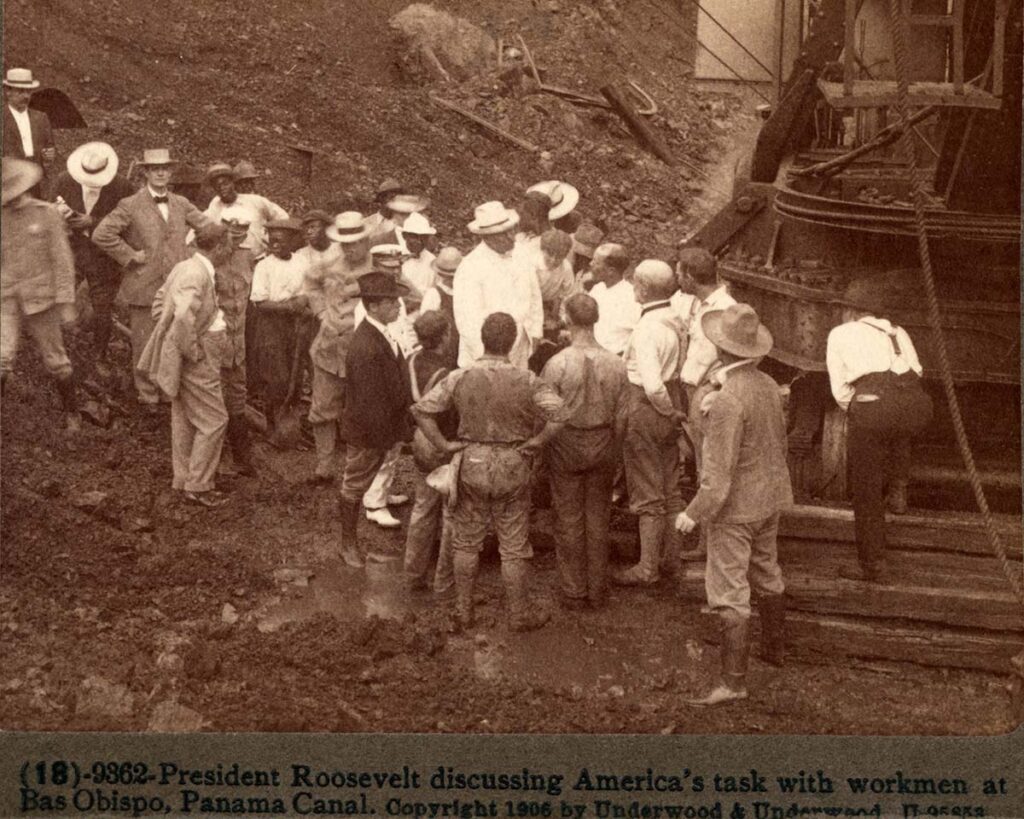
Paraíso
We crossed the Isthmus by train to the little town of Paraiso, where Dad was stationed. Our lodgings were identical to an Army barracks –a two-story building for four families, with metal-screened windows and zinc roofing. The sound of the rain pounding down on those roofs was wonderful. Houses were rustic. We had electricity, but no gas. Since electric stoves had not yet been invented, we cooked on wood-and-coal stoves –the same stoves used to heat clothes irons.
Just imagine it! –¡We were now in the Equatorial rainforests!
Ice, which was packed in our old oak icebox, was delivered to us daily. There were no bathtubs, only showers. There was a small wooden room with very rustic cement floors with the showerhead directly over the center of the ceiling. And each time one of us wanted to take a shower, which, in that climate was 3 or 4 times a day, the shower room was usually occupied by large, hairy spiders that scared me to death, and by scores of roaches.
There was no fresh milk or butter –which were all canned. There were also no vegetables or fruit, except for tropical ones such as bananas papaya, coconut, pineapples, mangos, and oranges, the latter of which were the most bitter we’d ever tasted. Although we had access to plenty of fruit, all vegetables were of the canned variety and when the fresh ones did arrive (by ship) they were already spoiled and were sold at very high prices. The beef was shipped from Argentina and was tougher than shoe leather. Fish, caught locally, was very good, but the chickens were the skinniest and most pathetic beings we’d ever seen. In our next issue, Kathryn will tell us about her experiences at Pedro Miguel.
[1] Gold Roll/Silver Roll: A controversial payment system, established by the builders of the Panama Railroad (19th century) and later adopted by the Isthmian Canal Company (1904-1960s) whereby U.S. and high-ranking Panamanian employees (generally of European descent) were paid in gold dollars while workers from all other nationalities (Afro-Caribbeans, Asians, Latin Americans, and southern Europeans) received salaries in Colombian pesos (silver coins). Although several highly skilled African American/Caribbean employees were paid in gold during the first years of the American Canal project, this lasted briefly, and the system soon became synonymous with racial discrimination. The rate duality was phased out between the 1950s and 60s.
